“Beginning to Feel Like Spring”
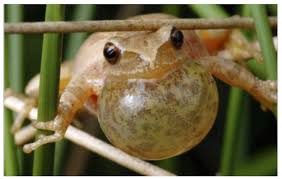
by Linda Martinson
Certified Blue Ridge Naturalist
Nothing like a Pandemic and a foot of snow to make you good and tired of winter, but a few days before the end of February, I heard the first calls of spring peepers in the evening and I felt a burst of Blue Ridge Spring happiness. Spring peepers do sound happy and thrilled to be alive…maybe because they are eagerly seeking mates. We have the northern subspecies of spring peepers (Pseudacris crucifer), widespread throughout the area wherever they have the right habitat. That would be, for example, moist fields; woods with creeks and marshes; and low grassy areas near ponds and wetlands. Spring peepers are small, about the size of a paper clip, so although the chorus of their calls is loud, the tiny frogs are seldom seen.

It is important to protect the spring peepers in our meadow. The habitat of spring peepers in the U.S. is declining because of the loss of wetlands, and the significant decrease of their populations in several areas. The swampy areas we have along the river at Richland Ridge, formally a Montane Alluvial Forest community, are among the most critical conservation areas in Western North Carolina. This is not only because of the excellent wildlife habitat they create, but also because of the severe decline of marshy habitats along the French Broad River and its tributaries and along other rivers in the area, too. For example, there were once as many as 1000 acres of marshy areas in the broad basin of the French Broad River. These are now reduced to fewer than 20 acres, mostly by drainage for agriculture and development. A significant number of these remaining acres are along our section of the West Fork of the French Broad River. We are fortunate to still have thriving populations of spring peepers so we can enjoy their passionate and optimistic chorus in the late afternoons and evenings as a sure sign of spring.
To listen to spring peepers, link to youtube.com “Spring Peeper Calling”
I had another burst of spring happiness a few weeks ago walking along the river in our Richland Ridge meadows with Dr. Jennifer Frick-Ruppert, a professor of biology and environmental science and chair of the division of science and math at Brevard College. She is also an outstanding naturalist who has written three nature-based books and several scientific articles. As we walked, she seemed to be able to identify every plant and shrub in our meadows.
Jennifer recommended that we keep woody plants, especially maple trees, out of the meadow areas, and she noted that beavers help with this endeavor. Once trees are established in meadow areas, they grow rapidly toward forest succession which is not desirable in a riverside meadow area, which optimally include marshy areas. She also recommended mowing our meadows by the river as often as we wish in the winter, but no lower than 8-10 inches and not later than mid-March. But during the rest of the year, mow only paths and let the meadows grow. That way we will have wildflowers all spring, summer, and fall through the Monarch butterfly migration. It is a meadow after all, not a golf course, so it should be grassy and crowded with wildflowers and critters.
In 1996, the Eastern U.S. population of Monarchs was estimated at about 700 million but in 2019, their population had dropped by more than 90%. Recently, however, there is some indication that their population may be increasing because more areas are being established in the U.S. to protect migrating Monarchs. It is exciting and heartening when we can see hundreds of Monarchs in our front meadow in late September/early October.
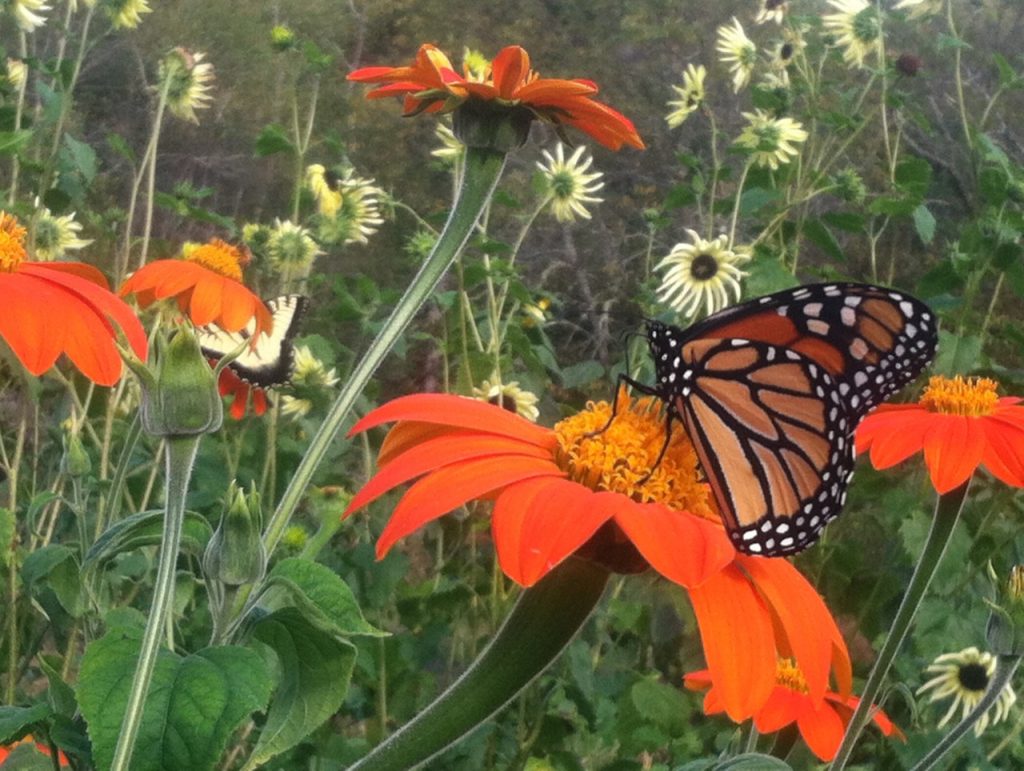
Locally at Richland Ridge, there are several varieties of native wildflowers growing by the river that are nectar sources for mature butterflies, including Monarchs. For example, for several years there has been a 150 yard stretch of beaver ponds, marshes and meadows with several wildflowers that are attractive to butterflies and that bloom in the summer and early fall. These include Joe Pye weed, ironweed, asters, goldenrods, coreopsis, jewel weed, asters, Turk’s Cap lilies, and Queen Anne’s lace. Butterfly weed and Swamp milkweed have been planted, and dozens of Monarch butterflies have been spotted at Richland Ridge almost every summer. A worthwhile goal is that eventually we may be able to establish a multi-acre Monarch Way Station at Richland Ridge along the West Fork of the French Broad River.
But I digress. Jennifer and I were walking in late February and the wildflowers weren’t blooming yet. A possibly significant Monarch migration through Richland Ridge was several months away. Still it felt like spring while we were walking, and anything seemed possible. Jennifer scooped up several tadpoles and put them in a plastic bag to show to her class. The eggs they hatched from were from wood frogs (Rana sylvatica), a unique species. For example, the tadpoles sound like ducks quacking and they are also distributed farther north than any other local frogs. Along with spring peepers, wood frogs are one of the first amphibians to emerge for breeding quite early in the year. They “quack” during the day.
Wood frogs emerge in early spring and lay their eggs in late January to early March, when freezing temperatures are still likely. Perhaps the most unusual characteristic of wood frogs is that they have evolved to be frozen for up to eight months each year as long as they are not embedded in a solid block of ice. That certainly seems like a biological miracle—they achieve it by moving glycogen into their tissues to prevent damage from ice crystals. And wood frogs seek out seasonal spring ponds without fish for both safe habitat and for the development of early amphibian and insect species without competition.
Wood frogs hibernate in the winter under logs, stumps, or leaf litter. Their bodies freeze in the winter and their hearts stop pumping and their breathing stops. And as much as 65% of the water in their body turns to ice. When spring comes around, the wood frog begins to thaw out and finds an attractive breeding pond without fish, usually before all the ice has melted.
Something wonderful happens in meadows in March. Along with wood frogs, which are early, large numbers of amphibians begin to move looking for ponds to mate and lay eggs. When they have found a safe spring pond without fish, male wood frogs begin calling with a loud quacking sound in search of the mate. There’s a hitch, however. Male wood frogs can’t identify females by sight or smell…they have to hug other wood frogs to determine
if it is a female. The females are fatter than males because they carry eggs so if it is a pudgy hug, it must be a female. After they mate, wood frogs become more solitary. They are from 1.5 to 3 inches long, with females usually longer. The colors of wood frogs range from brown to green to gray, with a white underside and upper lip, and they have a characteristic dark mask on their faces. Their life span is 3 to 5 years with females usually living longer.
Wood frogs eat beetles, spiders, snails, worms, millipedes, slugs, and other small invertebrates. Wood frog tadpoles eat algae and plant matter. The range of wood frogs is farther north than any other North American amphibian or reptile.
After breeding, female wood frogs lay egg masses of as many as 1,000 eggs in their breeding pond, usually attached to a plant stem or stick. The gooey gel of the egg masses, usually attached to a plant stem or stick. The gooey gel of the egg masses,about the size of baseballs, float to the surface in about a week and turn green from algae sticking to it which camouflages the eggs. The tadpoles hatch in about a week to a month, depending on the temperature, and become adult frogs in about two months. Male frogs reach sexual maturity at one or two years; females usually take three years.
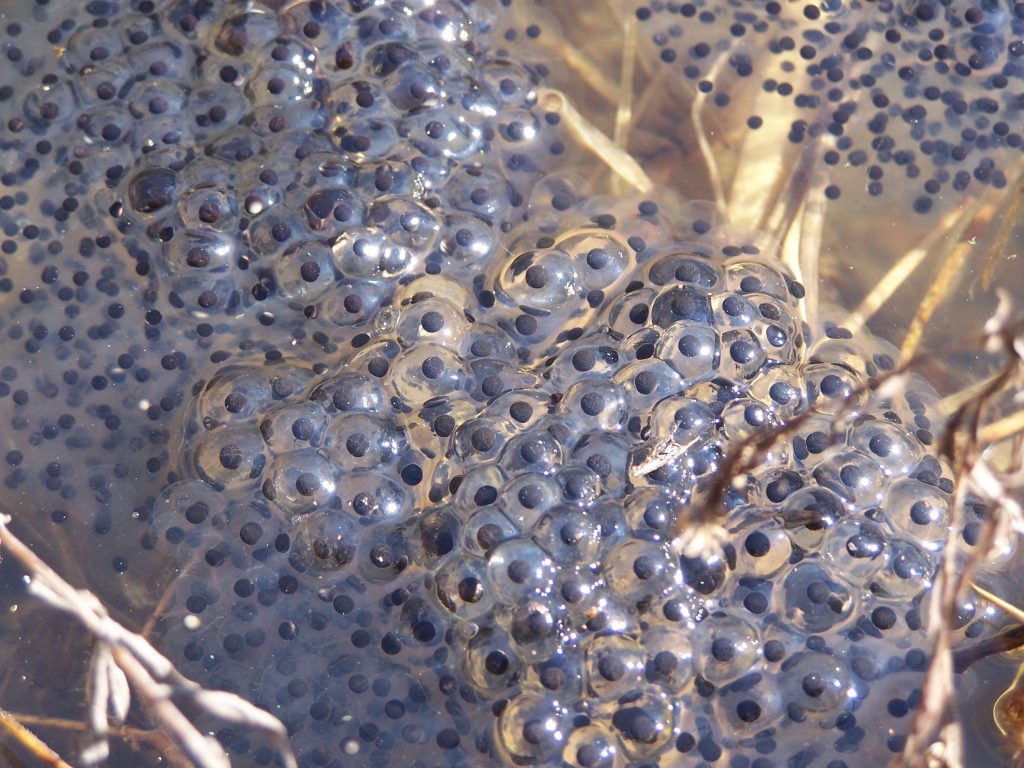
Back to our walk, here are two native plants Jennifer identified: Christmas ferns and Yellowroots. Christmas fern Polystichum acrostichoides, is a perennial evergreen fern native to eastern Canada and North America. It is common, found from Nova Scotia west to Minnesota and south from Florida and eastern Texas, usually in moist and shady habitats in woodlands, stream banks, and rocky slopes. Its common name derives from its fronds which are still green at Christmas. During the winter, the fronds stay green but infertile and lie flat on the ground. In the spring, new fronds grow and reproduce and, they are usually clumped together. Christmas ferns are beneficial because when they flatten against the ground in the winter, the ferns conserve soil and reduce erosion on steep slopes.
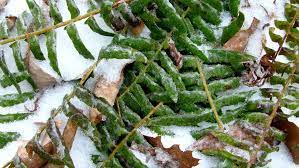
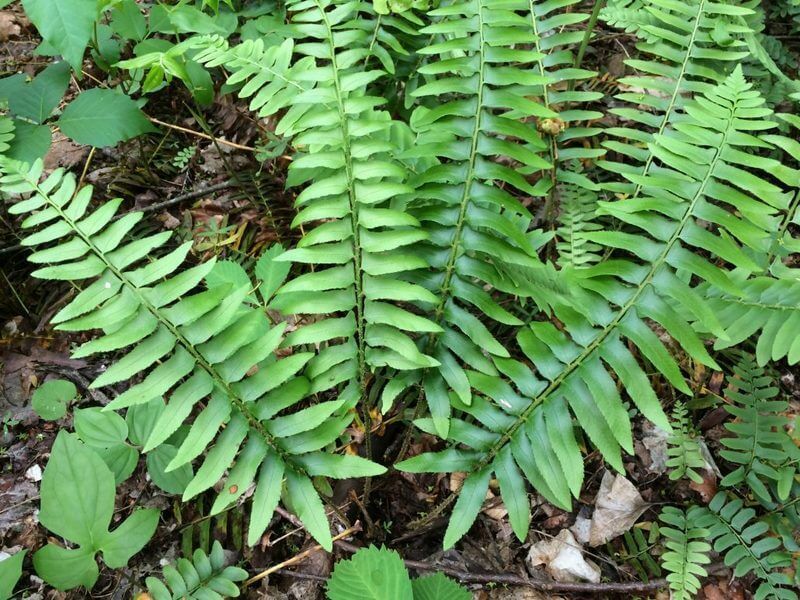
The second native plant Jennifer pointed out to me on that lovely afternoon is Yellowroot, Xanthorhiza simplicissima, the only member of the genus Xanthorhiza (xantho- meaning “yellow” and rhiza meaning “root”) and one of very few genera in the Ranunculaceae (buttercup) family that has a woody stem. Clematis, however, is another notable example of a woody-stemmed plant in the Ranunculaceae family. Yellowroot is native to the eastern United States from Maine south to northern Florida and west to Ohio and eastern Texas.

Not surprisingly, Yellowroot plants have yellow roots and their inner bark is also yellow. The plants are small shrubs growing up to 28 inches tall with long narrow stems. Their woody stems are simple unbranched shoots topped with clusters of light green leaves at the tips that resemble celery leaves. Wild Yellowroot plants usually grow in moist areas in mixed shade and sun, often along the edges of streams. The flowers bloom in branching clusters around the plant stems. Each flower is reddish brown to purple, small and star- shaped, with five petals. Yellowroot propagates asexually by sending out many underground runners which helps prevent erosion on slopes, and the plants also reproduce with seeds. Yellowroot is common in Western North Carolina and other areas in the southeast, but it is an endangered species in many parts of Florida.
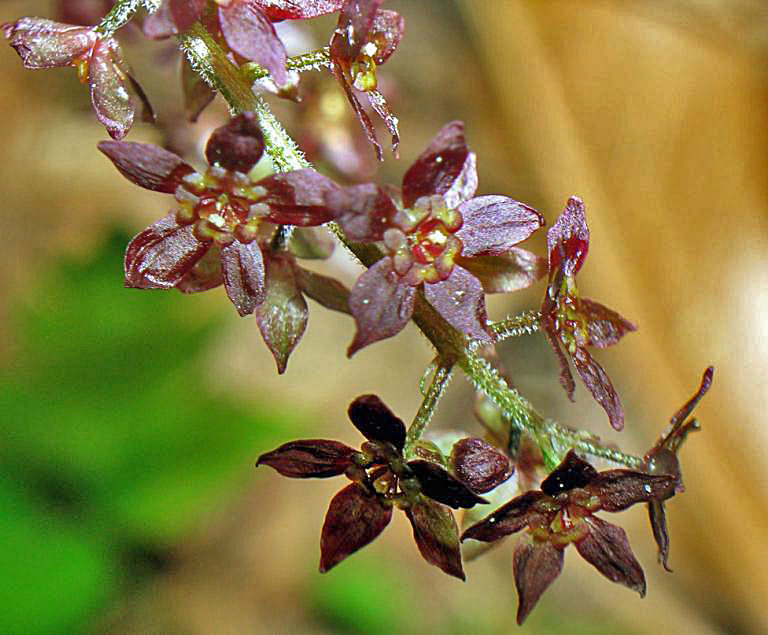
Native Americans used Yellowroot tea for stomach ulcers, colds, jaundice, sore mouth or throat, fever blisters, and as an astringent. Specifically, Cherokee Indians used the root for indigestion and to improve appetites, and also for the treatment of cancer, whooping cough, liver disorders, fevers, and heart problems. A Southern folk remedy of Yellowroot was used as a tonic for diabetes and hypertension, too.
The roots of Yellowroot contain the alkaloid berberine which has a number of traditional and contemporary uses for both dyeing and medicine. For example, it has anti- inflammatory, astringent, hemostatic, antimicrobial, anticonvulsant and immune stimulant properties. Berberine also stimulates secretion of bile and bilirubin and can be used to lower high tyramine levels in patients with liver cirrhosis. (Foster, S. & Duke, J. A. (1998). Field Guide to Medicinal Plants: Eastern and Central North America. Houghton Mifflin ISBN 0-395-92066-3). Note: Yellowroot used as folk medicine is toxic in large doses.
The last native plant we identified and discussed was club moss, with which we were both familiar, but it has a new scientific name: Diphasiastrum digitatum. And new information to me: Jennifer told me that club moss produces many tiny, oily spores and was therefore used in early photography as flash powder, and also as a substitute for aspirin. Native cultures used to throw club moss on fires to create a flash of light. Club mosses are very ancient plants and just about impossible to cultivate. So when there are areas where there is lot of club moss, as at Richland Ridge, you can be sure they are inspiring sites that are old and happy, supporting many different species.
It was a special day hiking with Jennifer and learning so much from her about the plants, animals, and birds in our riverside meadows. It was an enlightening opportunity for me and would likely be so for most people in our area. In contrast, I can envision most Cherokees long ago easily finding Yellowroot or any other plants they needed for their ailments or for food. It is humbling to think that most of us now need a naturalist to help identify many helpful, beautiful, and useful native plants. Enjoy spring and if you have the opportunity, walk around and watch for Christmas ferns, Yellowroot plants, and club moss.
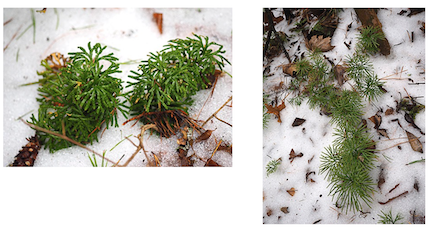
“…the neutral tones of March, the slow, ferocious patience of air and
plant and bird slowly squaring with change.” The Change Stephen Sandy 1997

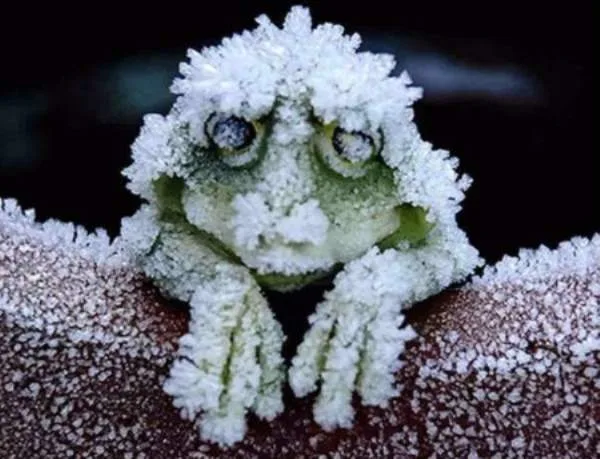
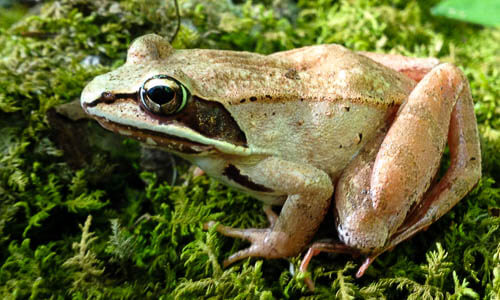
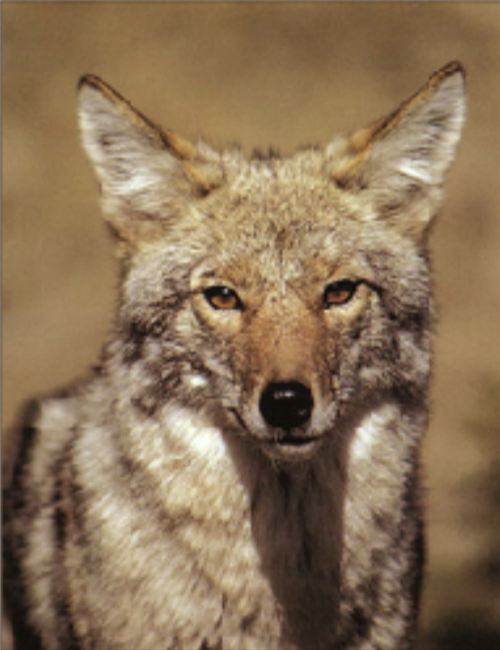
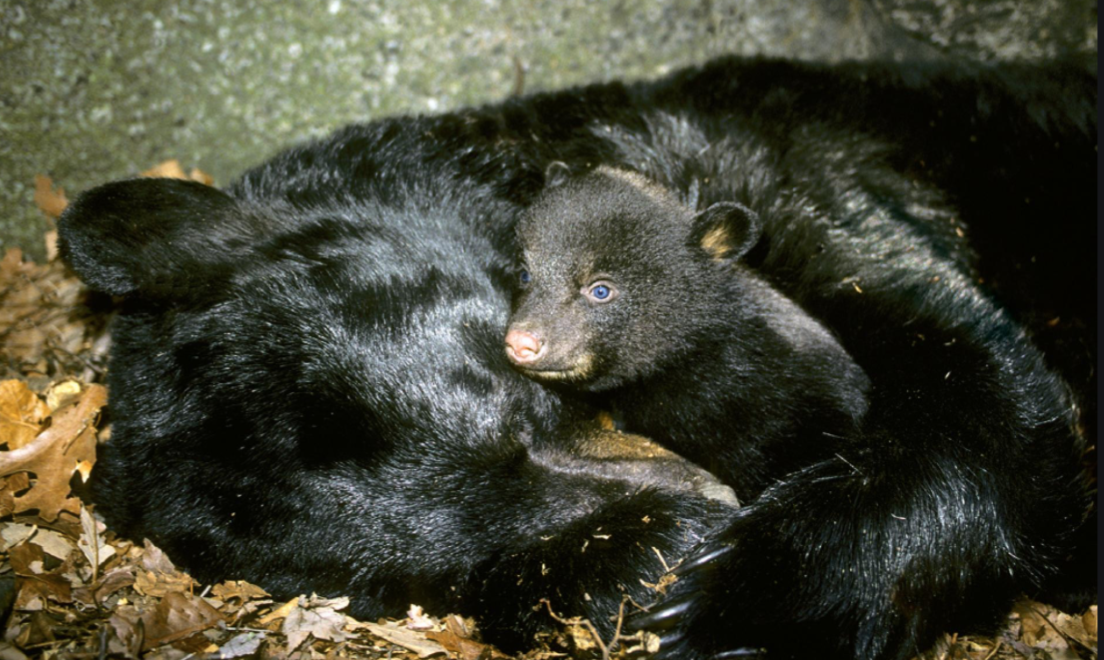
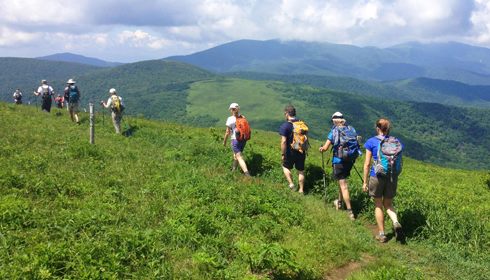





15 comments